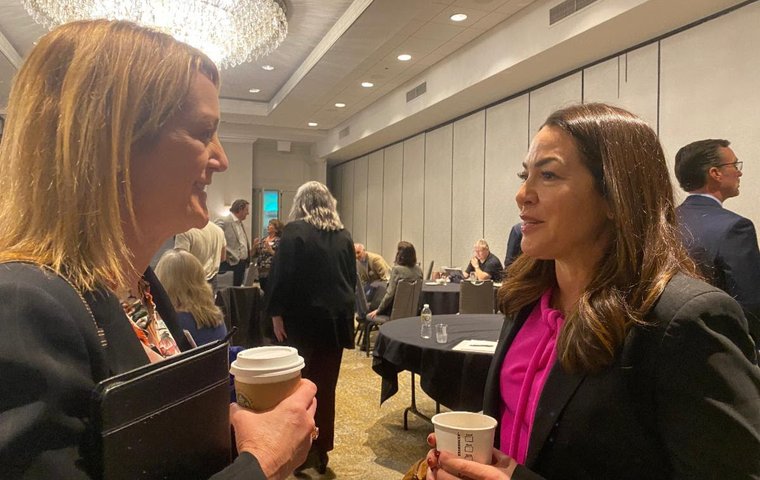
In his latest missive, Charles Hayward reflects on a worrying recent setback for the Horseracing Integrity and Safety Authority (HISA) – and doubles down on his support for federal oversight
Make no mistake: last month’s ruling declaring the creation of the Horseracing Integrity and Safety Authority (HISA) to be unconstitutional represents a hugely unwelcome development. It is terribly, terribly bad news.
The news emerged on Friday, November 18, when the Fifth Circuit Court of Appeals ruled on a suit brought by the National Horsemen’s Benevolent and Protective Association (NHBPA) and a number of their state affiliates.
Bear in mind the NHBPA now claims to have about 29,000 owner and trainer members in the US and Canada – so in effect, this is a case brought by certain horsemen designed to derail the creation of a federal body the sport desperately needs finally signed into law in December 2020.
Legislation ruled unconstitutional
Though we won’t have heard the last of this, those behind the suit achieved their immediate aims when it was ruled that the enabling legislation for HISA is unconstitutional on the grounds that it “delegates unsupervised government power to a private entity,” and thus “violates the private non-delegation doctrine”.
A three-judge panel issued a 35-page opinion on the matter, saying: “A cardinal constitutional principle is that federal power can be wielded only by the federal government. Private entities may do so only if they are subordinate to an agency … but the Authority is not subordinate to the FTC (Federal Trade Commission). The reverse is true. The Authority, rather than the FTC, has been given final say over HISA's programs."
Now there are many Thoroughbred and legal publications that can opine on a potential outcome, but this article is not one of them.
However, Eric Hamelback, CEO of the NHBPA, issued a statement after the ruling. He said: “I can assure you that we will be following this development closely and support the power reverting back into the hands of the state racing commissions.”
And therein lies the rub. Far from being universally welcomed, HISA has been opposed by certain states and certain horsemen who clearly feel they would rather not be ceding authority and power to another body.
Harsh reality
This, of course, is precisely what they would be doing if HISA ever gets properly off the ground – and US racing would be all the better for that, as I have argued several times in the past in this slot.
But as it stands, the harsh reality is that Thoroughbred racing has long been run by the individual state racing commissions, state horsemen’s groups and state government legislators.
So here my question is: if you don’t support HISA, then how well do these state-by-state entities perform? Do they succeed in producing high-quality racing and a good financial return to industry racing and breeding participants?
And the answer is clear. There is no proper management when it comes to how Thoroughbred racing is conducted today.
Let’s look at some important financial data for the last two decades as an example of economic mismanagement.
In 2003, all-source US wagering handle reached an all-time high of $15.180 billion. By 2021, this had declined to $12.216bn – a massive fall of 19.5% over the 18-year period in question. Purses in 2001 totalled $1.067bn; by 2021, there had been only a modest increase of $1.180m (about 1.1%).
Dramatic changes
The most dramatic changes over the same two-decade period from 2001 to 2021 were in the number of races which declined from 55,127 in 2001 to 33,567 in 2021 for a 39.1% total decline. The foal crop dropped from 34,721 foals in 2001 to 17,840 foals in 2021, a drop of 48.6%.
All these stats can be found online in the Jockey Club’s 2022 Fact Book – but it is important to keep in mind that these statistics on purses calculated by Equibase do not track the source of purse funds.
During the 2001-2021 period, there was a substantial increase in purse contributions from casino and slot machines throughout the country. For example, the first full year of operation from the Aqueduct Casino VLT’s was 2012 and the contribution to purses for the full year for the New York Racing Association was an increase of approximately $45m, resulting in a total of $150m+ on the NYRA circuit.
There is no question that the contributions from gaming, casinos, historical racing games and slot machines made substantial impact on most racetracks’ profitability and purse accounts across the country during the first two decades of the 21st century.
These purse contributions from various forms of gaming during this time offset reductions in purse payments due to the dramatic reduction in foal crops and the resulting dramatic reduction of live races.
However, the future of Thoroughbred racing in the US surely cannot rely on casinos and other gaming businesses to keep the racing business solvent.
Safety and integrity
So what about safety and integrity, the arena that gives the new authority its name, and the primary reason for its creation. I apologise for repeating myself here as I have written this in several previous columns – but can anybody still seriously believe the industry has shown itself capable of policing itself in the past?
Consider yet again the doping scandal that rocked US racing to its core via the bombshell indictments of March 9, 2020, wherein a widespread conspiracy to cheat was alleged among certain-notable major trainers such as Jorge Navarro and Jason Servis, and others involving misbranded and adulterated drugs.
On the day of the indictments, various industry leaders issued statements. Let’s look at some of them again:
• Stuart Janney Jockey Club chairman
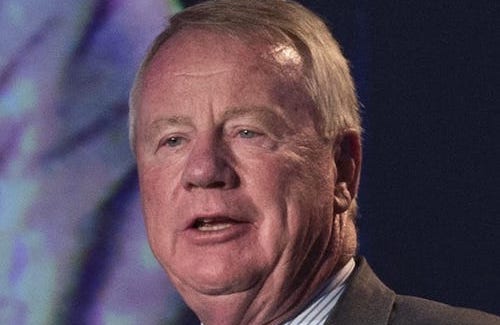 “Equine doping has long been a concern in racing circles, but one that has been difficult to investigate or prosecute effectively because the sport’s regulatory oversight has been diffused, and often lax, across more than 30 separate regulatory and enforcement agencies. Most people in the sport have suspected that some level of doping occurs, but evidence has been mostly third-hand and circumstantial, and real information was needed to define the problem and craft a path to a solution.
“Equine doping has long been a concern in racing circles, but one that has been difficult to investigate or prosecute effectively because the sport’s regulatory oversight has been diffused, and often lax, across more than 30 separate regulatory and enforcement agencies. Most people in the sport have suspected that some level of doping occurs, but evidence has been mostly third-hand and circumstantial, and real information was needed to define the problem and craft a path to a solution.
“The 5 Stones investigation produced indications of significant racehorse doping and active equine doping networks within the industry. This included information supporting findings that doping is often supported by enablers, composed of trainers, veterinarians, pharmacists, stable staff and, in some instances, owners.
“We have pledged our total cooperation as Federal authorities continue their investigations and prosecutions.”
Charles Hayward says: Simply stated, had the Jockey Club and Jeff Gural had not engaged and paid for the investigative services of 5 Stones intelligence (5Si) it is highly doubtful that these indictments would have occurred. The investigatory work undertaken by 5Si clearly was a key factor in the decision by the FBI to undertake its own investigation.
The FBI uncovered the facts necessary for the Southern District Manhattan office of the US Attorney to take on the case, obtain indictments – and numerous criminal convictions.
• Kitty Block Humane Society of the US president and CEO
“The reprehensible actions described in the racehorse doping scandal announced today are likely just the tip of the iceberg. These individuals, and the industry, must be held accountable. Congress needs to pass the Horseracing Integrity Act to improve the welfare of racehorses throughout the country, and bring the industry into the modern century.”
Charles Hayward says: This is a very important statement from a powerful animal welfare organization. Its continuing support in Washington political circles is immense and the Humane Society has been very helpful during the serious equine breakdown issues that the industry experienced in 2019.
• Eric Hamelback National HBPA CEO
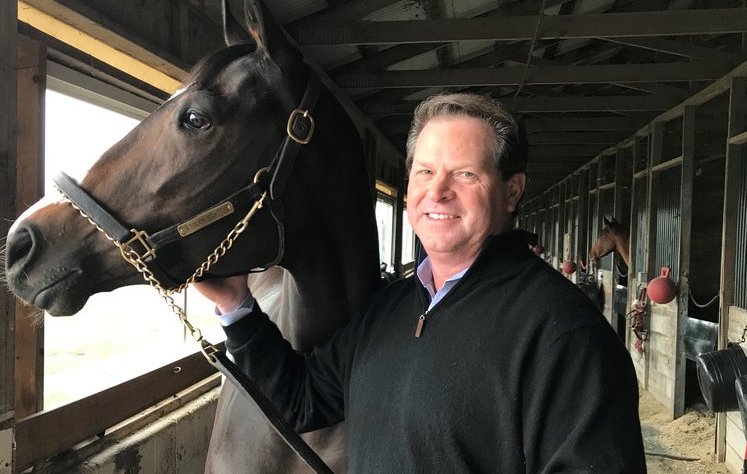 “The news today of the indictment returned against racehorse trainers, veterinarians and others involved is extremely troubling. The National HBPA focus has always been, and remains, the health and safety of the horse, the jockey and all of the individuals coming into contact with the horse, and we strongly oppose the behavior alleged in this indictment.”
“The news today of the indictment returned against racehorse trainers, veterinarians and others involved is extremely troubling. The National HBPA focus has always been, and remains, the health and safety of the horse, the jockey and all of the individuals coming into contact with the horse, and we strongly oppose the behavior alleged in this indictment.”
Charles Hayward says: It is disappointing that the National HBPA has not expressed outrage that this illegal behavior by twenty eight indicted industry participants has resulted in substantial financial losses to owners, trainers, and bettors.
The National HBPA and a number of their state affiliates have filed lawsuits challenging the very existence of HISA. The regional state by state management of Thoroughbred racing is a badly broken model and for the sake of the 30,000 members of the National and state HBPAs, I only hope that their organization is playing a bad hand on their behalf.
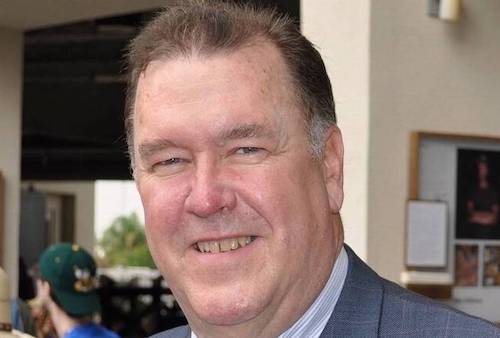 • Ed Martin Association of Racing Commissioners International (ARCI) president
• Ed Martin Association of Racing Commissioners International (ARCI) president
“Today’s indictments are good news in that they demonstrate the multiple layers of enforcement and the tools available, including wiretaps, that exist to police this sport. The takeaway for everyone involved in racing is simple: don’t do the crime if you can’t do the time. Putting one over on the lab does not mean you won’t be eventually caught.”
Charles Hayward says: Wow! There was no demonstration of the multiple layers of enforcement and the tools available. If Stuart Janney and the Jockey Club with an assist from Jeff Gural, and the investigative work done by 5 Stones intelligence had not invested millions over a five year period there would have been no indictments,
According to the ARCI website: “ARCI members are legally charged with the responsibility to ensure the integrity of racing and pari-mutuel wagering.”
ARCI is the organization of state racing regulators. and none of these ARCI regulators reported any significant illegal activities in the jurisdictions where the cheaters were practicing their trade. Over the course of the scheme, participants manufactured, purchased, sold, shipped, delivered, received and administered thousands of units of PEDs for use on racehorses.
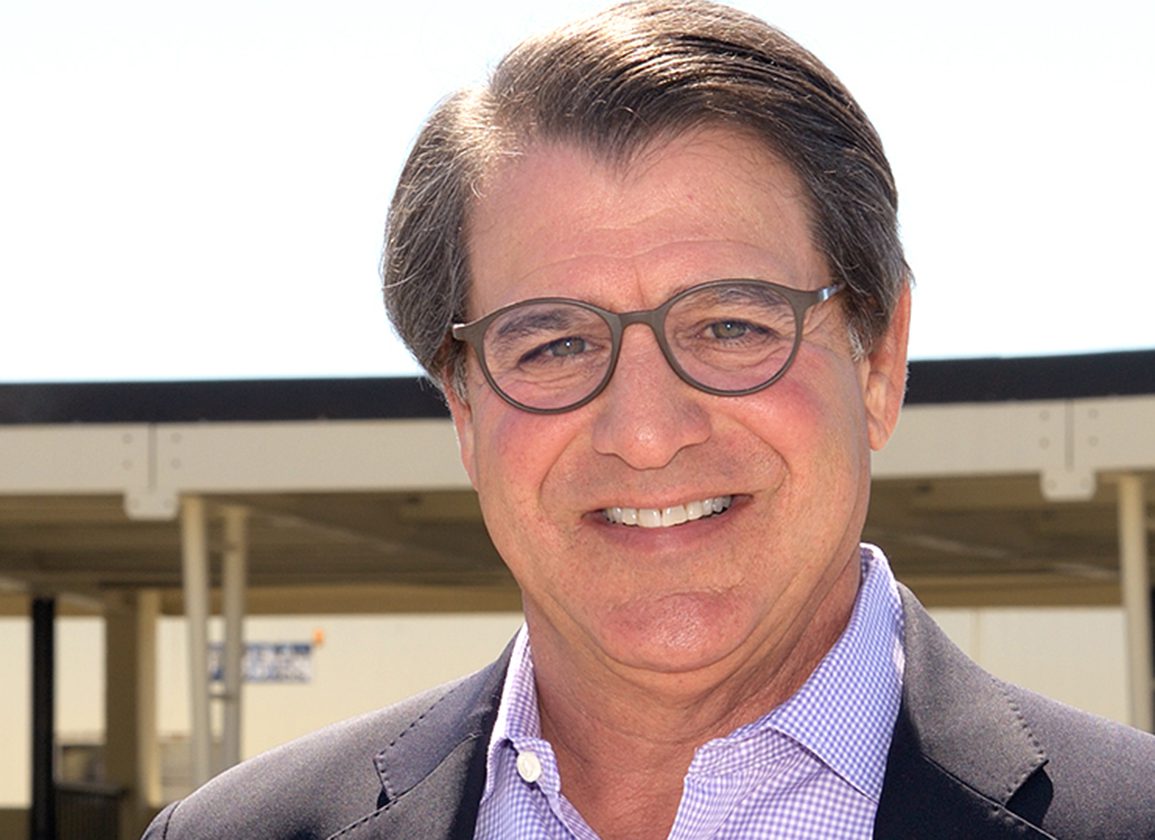 • Alan Foreman Thoroughbred Horsemen’s Association chairman (also advisor to many state horsemen’s organizations and NTRA board member)
• Alan Foreman Thoroughbred Horsemen’s Association chairman (also advisor to many state horsemen’s organizations and NTRA board member)
“This is a bad news good news story … the good news is the industry is capable of rooting this kind of conduct out. They’re able to deal with it and send a message of deterrence and I think that is the message here.” (speaking on Steve Byk’s At The Races radio show)
Charles Hayward says:Alan Foreman is one of the best legal minds in the industry but this comment truly misses the mark. Unfortunately, as pointed out above, the state regulators, state racing commissions and the national horsemen’s organization were not capable of rooting out this kind of conduct and the result was completely failing the racing industry. Sadly, I believe that Servis and Navarro would still be winning races if the Jockey Club had not engaged 5Stones intelligence to investigate and make a compelling case to get the FBI and the US Attorney involved.
Heralding a new safer era
When the Horseracing Integrity and Safety Act was signed into law in December 2020, a new safer era for the sport of Thoroughbred racing was in the offing as industry stakeholders and experts came together to modernize the centuries-old tradition under HISA.
But let’s be clear: the federally mandated timeframe that HISA is working under is truly challenging. Their Racetrack Safety Program went into effect on July 1, 2022 – whip oversight comes under this aspect of the HISA mandate. The Anti-Doping and Medication Control (ADMC) Program is due to start in the new year.
On the plus side, I have been impressed with CEO Liza Lazarus’s leadership and communication skills from her first ten months in her new position, and similarly positive about HISA’s selection of 19 members to the new HISA Horsemen’s Advisory Group.
With leading trainers Mark Casse and Graham Motion among them, they were chosen from more than 250 applications received from hands-on racing participants from across the country representing a broad range of views and experience from across the American horseracing community.
Full list of HISA Horsemen’s Advisory Group board members
Such an array of talent amply demonstrates that, despite the recent setback, there is serious support within the industry in support of HISA, an understanding that this is the way forward.
There is a dangerous, worrying legal dispute challenging HISA’s constitutionality. But given the ineffectual regulation of the recent past and the resulting corruption, the lesson should be crystal clear for anyone with the racing industry’s best interests at heart.
There can be no looking back.
• View previous articles in the View from the Rail series
Glass ceiling in the rooftop booth: how Jessica Paquette became America’s only female race caller
‘I like to win a lot of races’ – ‘Iron Man’ Perry Ouzts is still going strong aged 68
View the latest TRC Global Rankings for horses / jockeys / trainers / sires


